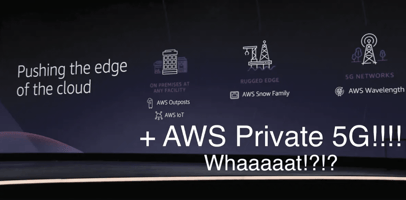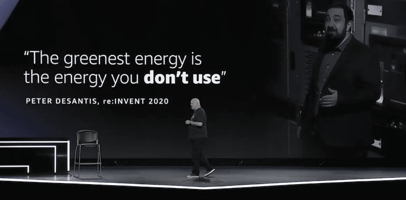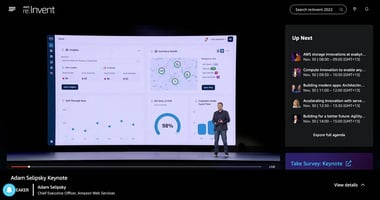It’s still dark outside, the coffee is flowing and the bed hair is unkempt. AWS re:Invent year is...
AWS re:Invent 2021 Recap: Our Top 3 Announcements
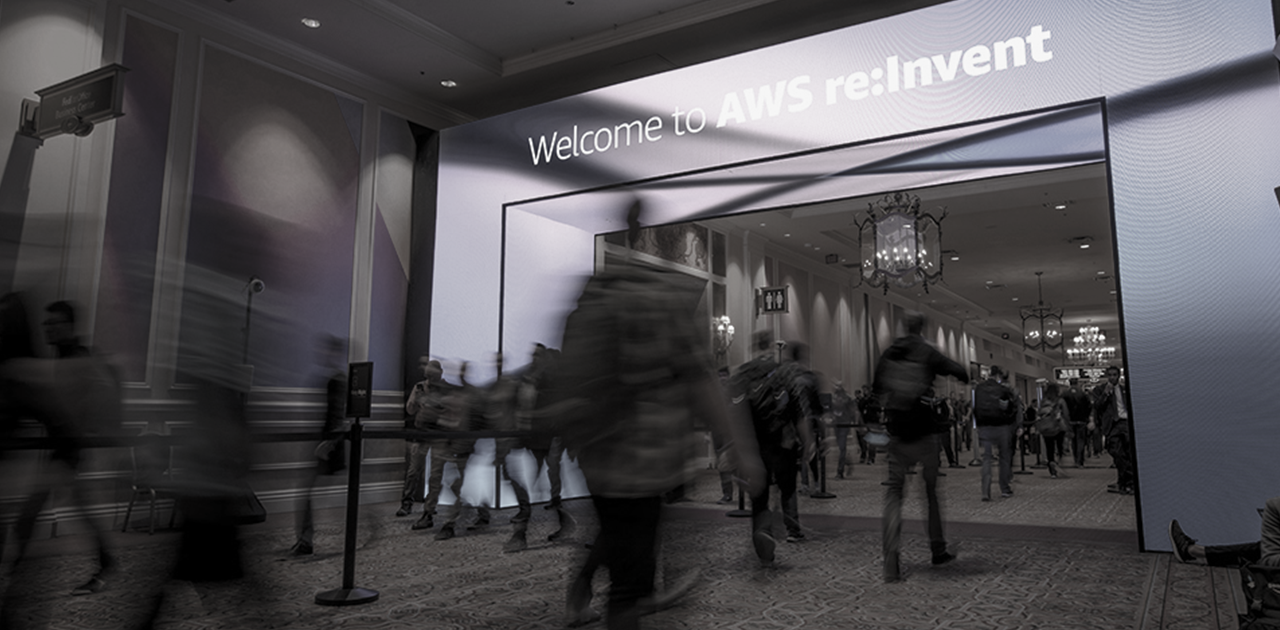
Once again AWS re:Invent didn’t disappoint in the way of large announcements. There were some constant themes throughout, such as a continuation of the standing theme of releasing services that essentially aggregate other services and make them easier to consume. If you see a bunch of awesome services one year at AWS, often the next year there is a service released to help plug them all together.
Of all the announcements, however, here are my picks of the most interesting, impactful or direction-setting ones.
AWS Private 5G
While AWS is not the first company to offer private LTE-type services there are a few key points that make this really stand out, such as:
- Stating the obvious, it is AWS offering this, not a network comms equipment provider. This signals quite a big play from AWS to not only support IoT from a software perspective but actually make the hardware and networking components much more accessible.
- Following on from the above point, this appears to be very neatly packaged as an offering. Typically private LTE networks have been something you piece together. With AWS you order a fully managed service that is dimensioned for your throughput requirements. AWS will provide the SIM cards through to the network equipment.
- It isn’t yet clear where this service will be available globally but one clue is that it is configured to use the Citizens Broadband Radio Service (CBRS) spectrum allocations in the US. This is part of the mid-band 5G spectrum. Although submissions on NZ’s spectrum allocation for 5G have included references to a similar allocation, it is unclear thus far if this will be the case.
Use cases for this service are expected to be around localised IoT networks, such as large factories, campuses or possibly farms as examples. It’s certainly proven to be quite the conversation starter.
From an AWS partner perspective, this could really help accelerate the deployment of 5G for IoT applications without being reliant on mobile providers. With no separation between the wholesale and retail operations of mobile providers in NZ, we have seen limited development of MVNO or similar offerings which could curtail the development of cost-effective and flexible offerings.
AWS Cloud WAN
Without making this too network-centric, AWS Cloud WAN is a significant, but maybe rather obvious addition to the AWS stable of services. It is over 3 years ago that Microsoft released Azure Virtual WAN and an area AWS won’t want to be left behind on. You’ll likely already be aware of the massive network AWS had interconnecting their data centres. In fact, an increasingly large portion of the fibre networks connecting the world is owned by cloud providers rather than telcos. Where your AWS services connect to AWS services in other regions they will already use the AWS backbone to connect, rather than the public internet, unbeknownst to the user.
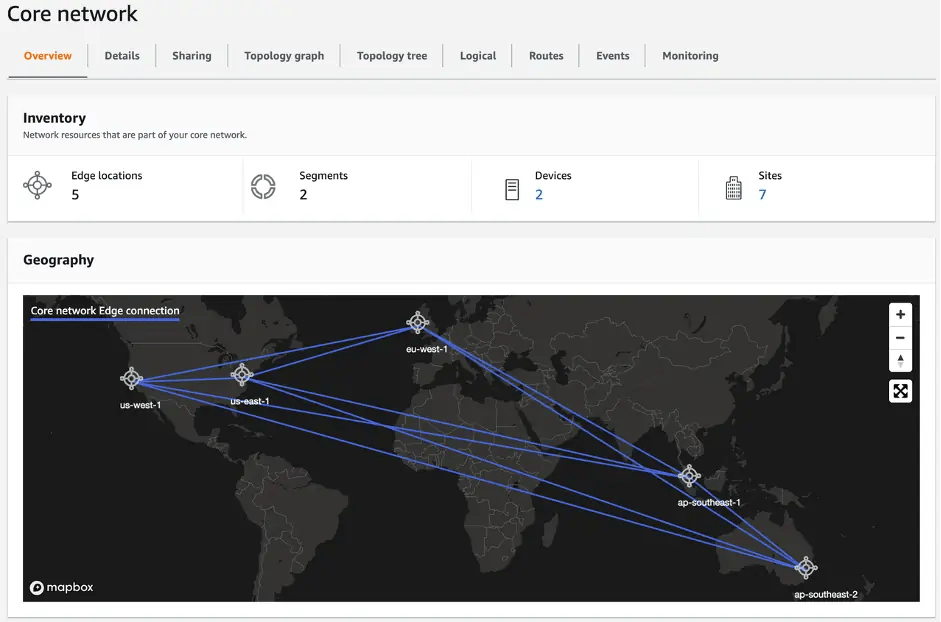
AWS Cloud WAN now allows you to connect your sites around the globe, such as offices and factories, to AWS and build your WAN over their network. Getting the traffic there happens via any number of vendors announced including VMware Velocloud, Cisco and Fortinet. SD-WAN devices from these vendors will be able to act as onramps to AWS Cloud WAN, forwarding traffic to the closest region, for it to then route via AWS to its destination, which could be another one of your offices half the world away.
I suspect in typical AWS fashion we will hear a lot more on this announcement next year, quite possibly with the inclusion of either AWS services or partners who can provide additional security integrated into AWS Cloud WAN. This would see AWS move into the SASE game, competing head to head with pure-play vendors in this space such as Zscaler.
Low Code / No Code
While this isn’t specifically a product announcement, it is a growing theme at every Re:Invent. Rewind to the 2018 keynote where then CEO of AWS, Andy Jassy rolled out the term “AWS is for builders”. The term builders was dropped numerous times throughout the keynote in lieu of the term developer. Take a step back from the cloud industry, and what started as largely IaaS services has rapidly developed into something unrecognizable from the traditional compute + storage models. The development of PaaS services and increasingly serverless options have clearly said for some time that cloud-native apps are the future.
The move to increasingly provide low-code and No-Code options broadens the definition of what a builder might be. Where previously you might have needed a data or BI specialist, now the business user might be able to get their hands dirty searching for the insights they seek. Or where you may have otherwise had a room full of coders, you might have a UX or product team piecing together the design and logic of your next app.
Notable announcements that fall under this category include Sagemaker Canvas, a no-code ML model builder which allows business users to generate ML predictions using a visual interface. Or there is Amplify Studio which helps you rapidly build feature-rich applications with little coding knowledge. In addition to these design-orientated services, AWS introduced SageMaker Studio Lab which is a free service to allow people to experiment with, and learn about ML.
Summary
The list of announcements could go on and on, some being new products and others being feature enhancements. For me, Re:Invent is the perfect time of the year to reflect on what we might see in the future years to come. The meta of this I would summarise as:
- IoT is still so small, yet it will be so big that barriers are being removed in ways we may not have previously anticipated
- Cloud and networking will become synonymous, and areas previously dominated by telcos will be performed in software by cloud providers, excluding the last mile.
- Building cloud-native business applications will become easier and easier. Whether it is something with a UI for public release or an internal ML tool, business users will increasingly be able to join the rank of “builders”. Just don’t think about how you’ll maintain it yet...that might spoil Christmas
Next year will hopefully be one where attending in person will be possible from NZ, but for now, the remote sessions were still good to get a few brain cells firing.


